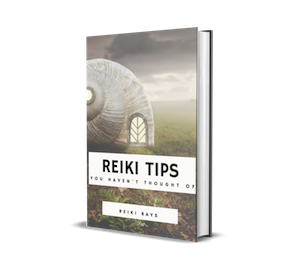The introduction to breathwork unveils the profound significance of breathing, often overlooked despite being the most vital bodily function. Consistently operating, whether consciously acknowledged or not, each breath is a lifeline, embodying the essence of existence itself. Man’s symbiotic relationship with breath transcends mere survival; it defines his very essence. Rooted in ancient wisdom, breath is seen as the conduit of life force, known as prana, Qi, or Ki, shaping not only physical but also spiritual realities.
Birth and death are intimately intertwined with breath, the eternal companion of the soul. Understanding this intrinsic bond illuminates the path towards self-realization. Here, breath transcends its mechanical function, carrying profound messages and spiritual significance. Enter breathwork – a deliberate practice to harness and channel the subtle currents of prana within, guiding seekers towards spiritual fulfilment.
Drawing from diverse traditions such as Tantra and Taoism, breathwork emerges as a gateway to cosmic wisdom and inner transformation. Through breath analysis, the mysteries of the universe unfold, aligning individuals with the timeless truths encoded in ancient scriptures. The journey of breathwork becomes synonymous with the awakening of the entire being, a path paved with profound insights and boundless potential.
Practical techniques, rooted in ancient wisdom, offer avenues for harnessing the power of breath throughout the day and night. From directing prana through specific nostrils to cultivating energy flow, breathwork becomes a catalyst for holistic well-being. Empowered by breath, individuals traverse the realms of consciousness, embodying the eternal dance of life and transcendence.
Thus, breath is not merely air flowing through the nostrils; it is the conduit for Ki, the vital life force energy. Understanding the role of breath is paramount to harnessing Reiki’s full potential.

Alternating Rhythms of Breath
The alternating breath, often overlooked, reveals a fascinating aspect of respiration. Contrary to common belief, breathing occurs simultaneously through both nostrils, yet one nostril dominates at any given time.
Observing the breath closely unveils a rhythmic pattern: one nostril remains open while the other closes, before switching roles. This rhythmic oscillation, far from irregular, follows a precise timetable, with each nostril taking turns approximately every hour or hour and twenty minutes. It intricately regulates every aspect of physiological and psychological functioning. A deviation from this balanced alternation may signify underlying issues within the body, highlighting the importance of maintaining this natural rhythm for overall well-being and underscoring its significance for Reiki practitioners.
The Trio of Breath
The alternating breath sets the stage for understanding the intricate interplay of the trio of breaths, which unveils a fascinating rhythm within our respiration, intricately connected to our physical, mental, and spiritual realms. Breathing allows for the flow of three distinct breaths: one through the left nostril, one through the right, and one through both simultaneously, each with its unique effects on our being.
This rhythmic alternation is not arbitrary but deeply tied to the body’s biorhythms and the interconnectedness of the brain’s hemispheres. In the realm of breathwork, these three breaths symbolize the trinity of human existence: mind (chitta), life energy (prana), and spirit (atma).
The left nostril flow signifies the dominance of mental energy (chitta) over pranic energy, while the right nostril flow indicates the opposite. When both nostrils function together, it reflects the harmonious presence of spiritual energy (atma). These nasal flows correspond to three primary categories of human actions: mental, physical, and spiritual.
Understanding and responding appropriately to these nasal flows is crucial for maintaining harmony between mind and body. Through breath regulation and synchronization with actions, one can achieve a profound alignment of the self, paving the way for deeper meditation and holistic well-being. Aligning the breath with this trio facilitates mental clarity, vitality, and spiritual growth, enhancing the efficacy of Reiki practice.

The Interplay of Ida, Pingala, and Sushumna
In exploring the body’s energy dynamics, we delve into the role of breath in stimulating these flows. In yoga philosophy, the conduits for these energies are referred to as nadis or meridians, with three prominent ones: Sushumna, Pingala, and Ida.
Sushumna, the principal channel, is activated when both nostrils operate simultaneously. Ida is associated with the left nostril, while Pingala corresponds to the right. Each nostril’s breath generates energy akin to positive and negative currents in an electrical circuit: right being positive, left being negative.
During alternate nostril breathing, when both nostrils are open, Sushumna is believed to awaken spiritual potential, or atma, albeit momentarily. It serves as the focal point for all spiritual practices in yogic and tantric traditions.
Sushumna ascends along the spine, merging with Ida and Pingala at the Third Eye Chakra. The activation of Sushumna is indicated by the balance of both nostrils’ activity, emphasizing the significance of balanced breathing in facilitating its opening.
The flow of Sushumna induces a state of calmness, steadiness in energy patterns, and cessation of thoughts, making it pivotal for meditation while doing Reiki. Thus, the endeavour is to minimize alternating breath activities to cultivate this profound state.
Expanding the Scope of Breath Beyond Physical
The fluctuating nature of each breath prompts a profound inquiry into its significance. At its core, breath embodies Ki, the vital life force that transcends mere lung function. Acting as a vehicle for prana shakti, breath traverses beyond the confines of the physical body, permeating spiritual and subtle realms.
Viewed through a spiritual lens, breath becomes akin to a bowstring, propelling consciousness towards the universal spirit, the atman. Beyond its physiological role, breathing catalyzes the evolution of consciousness. While conventional medical science may confine its focus to the biological aspects of respiration, human existence surpasses mere physicality.
Indeed, the realm of existence extends beyond the boundaries of the physical body, encompassing energy, thought, awareness, and superconsciousness. This holistic understanding deepens our comprehension of the interconnectedness between mind, consciousness, and the cosmos, catalyzed by the dynamic flow of energy inherent in breath.
Having the right breath is essential for maximizing the benefits of Reiki practice. By cultivating awareness of breath patterns and aligning them with Reiki techniques, practitioners can enhance energy flow, deepen healing effects, and accelerate spiritual growth. By honoring the breath as the vehicle for Ki, practitioners unlock the full potential of Reiki healing, fostering balance, harmony, and well-being.
Article by Reiki Master Supriya Nair
Free eBook download: We’ve created an eBook with our best articles on this topic, and offer it for free to all our newsletter subscribers.


Supriya Nair
Dr. Supriya Nair, IMD, PhD has been a Reiki and Kriya Yoga practitioner since 2008. A conduit between the scientific and spiritual worlds, Dr. Supriya has a profound fascination for the healing arts. Apart from holding the title of Usui Reiki Master Teacher, Dr. Supriya is a certified Health Coach and proficient in various integrative medicine modalities. She is also the author of "Train Your Brain to Unchain Your Pain."
To get in touch with Dr. Supriya, you can reach out via email at [email protected] or connect with her on Facebook at facebook.com/supriyanair111 and on Instagram at instagram.com/proconscious.cafe.





Leave a Reply